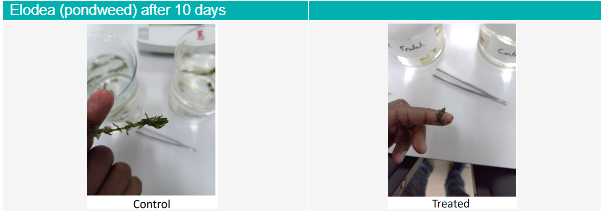In an Australian first, a Federation University study supported by Southern Rural Water has proven UV-C radiation energy can be used to kill submerged weeds in laboratory conditions.
The recently completed Masters’ study showed that sufficient UV-C radiation energy can kill aquatic weeds found in Macalister Irrigation District channels.
Aquatic weeds, left untreated, choke channels and prevent the effective delivery of water needed to irrigate vegetable crops and pastures for dairy production.
Herbicides are currently the only option to treat submerged weeds. Southern Rural Water uses herbicides with careful consideration about what and how these are used, as well as where and when we use chemicals. This is to minimise risk to our people, the environment and our local communities.
“Our hope is UV–C radiation energy treatments could be a future alternative that will both benefit the environment and remove the need to use chemicals,” said Southern Rural Water’s Manager Environment and Climate Adaptation, Kate Berg.
“This project supports our continued focus on improving safety outcomes for our communities and our people,” Ms Berg said.
While the study shows UV-C radiation can kill submerged weeds in the lab, this is only a first step towards considering how this may be used as an alternative to herbicides.
What the study found
Federation University student Dian Udugamasuriyage studied the chlorophyll content of pondweed, Elodea canadensis
, and ribbonweed, Vallisneria australis, after exposure to different concentrations of UV-C radiation over different time periods and at varying distances from the energy source.
In the laboratory, the weeds were placed in a petri dish and exposed to UV-C radiation energy at different concentrations, distances and time periods in this custom-built treatment box. Dian observed plant leaves for physical changes and cellular level changes under microscope.
The laboratory research conclusively showed how different levels of irradiance – light and radiant energy striking a given area of surface – can cause plant cells to break down. Dian varied the time and amount of irradiance to find the optimum amount needed to kill the weeds. The results show the clear disintegration of tissues 10 days after UV-C radiation energy was applied to pondweed.

What’s next?
To build on this initial study, research is required to determine the distance the UV-C radiation needs to be applied above the surface of the water to be able to effectively kill weeds submerged at different depths in the channel.
Peter Miller, Maintenance Supervisor, said this also needs to be considered terms of practical application for our assets and operations.

